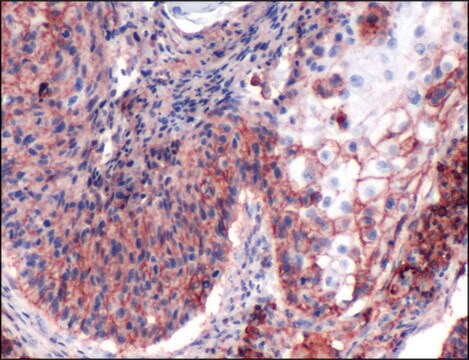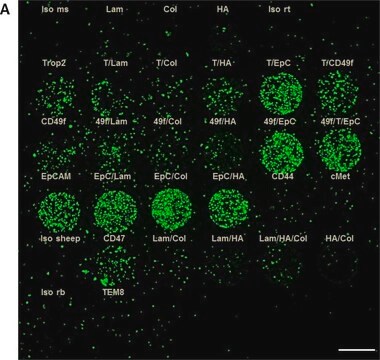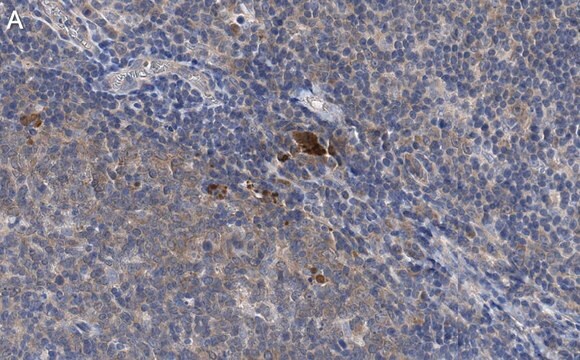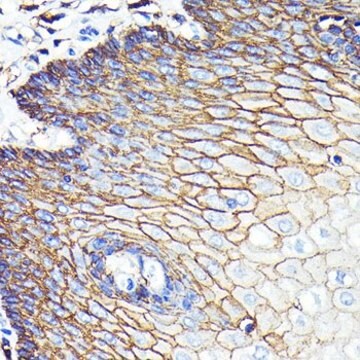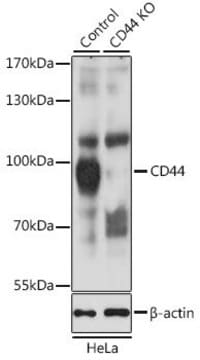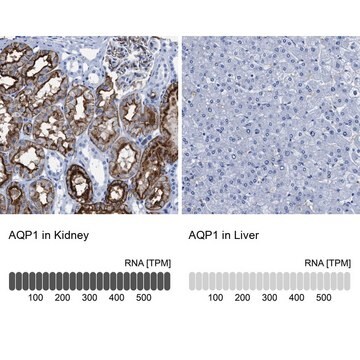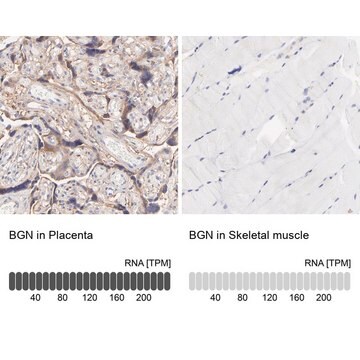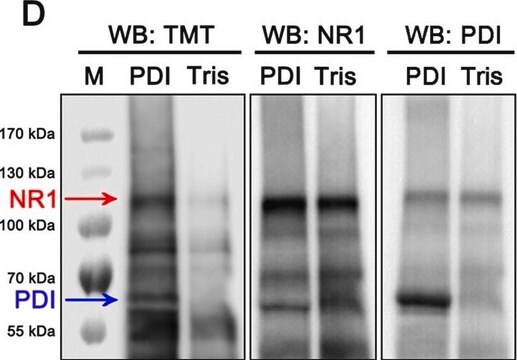MABT78
Anti-mouse CD44 (H-CAM) Antibody, clone KM201
clone KM201, from rat
Synonym(e):
CD44 antigen (homing function and Indian blood group system), CDw44 antigen, HCAM, H-CAM, HUTCH-1, Phagocytic glycoprotein I, Extracellular matrix receptor III, GP90 lymphocyte homing/adhesion receptor, Heparan sulfate proteoglycan, Hermes antigen, Hyalu
About This Item
Empfohlene Produkte
Biologische Quelle
rat
Qualitätsniveau
Antikörperform
purified antibody
Antikörper-Produkttyp
primary antibodies
Klon
KM201, monoclonal
Speziesreaktivität
mouse
Methode(n)
flow cytometry: suitable
Isotyp
IgG1κ
NCBI-Hinterlegungsnummer
UniProt-Hinterlegungsnummer
Versandbedingung
wet ice
Posttranslationale Modifikation Target
unmodified
Angaben zum Gen
human ... CD44(960)
Allgemeine Beschreibung
Spezifität
Immunogen
Anwendung
Zellstruktur
Stammzellforschung
Adhäsions-Proteine (CAMs – Zelladhäsionsmoleküle)
Hämatopoetische Stammzellen
Qualität
Flow Cytometry Analysis: 0.1 µg of this antibody detected CD44 in mouse bone marrow cells.
Zielbeschreibung
Verlinkung
Physikalische Form
Lagerung und Haltbarkeit
Hinweis zur Analyse
Mouse bone marrow cells
Sonstige Hinweise
Haftungsausschluss
Sie haben nicht das passende Produkt gefunden?
Probieren Sie unser Produkt-Auswahlhilfe. aus.
Lagerklassenschlüssel
12 - Non Combustible Liquids
WGK
WGK 1
Flammpunkt (°F)
Not applicable
Flammpunkt (°C)
Not applicable
Analysenzertifikate (COA)
Suchen Sie nach Analysenzertifikate (COA), indem Sie die Lot-/Chargennummer des Produkts eingeben. Lot- und Chargennummern sind auf dem Produktetikett hinter den Wörtern ‘Lot’ oder ‘Batch’ (Lot oder Charge) zu finden.
Besitzen Sie dieses Produkt bereits?
In der Dokumentenbibliothek finden Sie die Dokumentation zu den Produkten, die Sie kürzlich erworben haben.
Unser Team von Wissenschaftlern verfügt über Erfahrung in allen Forschungsbereichen einschließlich Life Science, Materialwissenschaften, chemischer Synthese, Chromatographie, Analytik und vielen mehr..
Setzen Sie sich mit dem technischen Dienst in Verbindung.